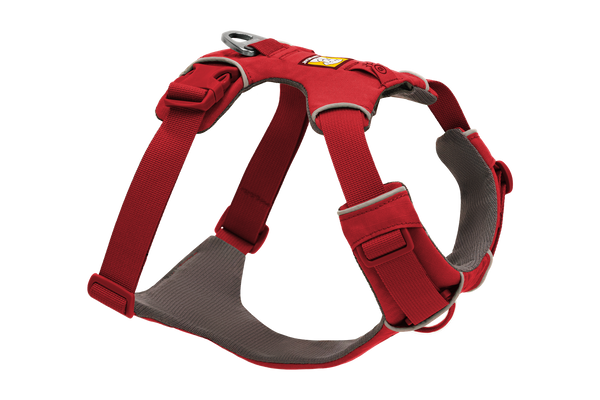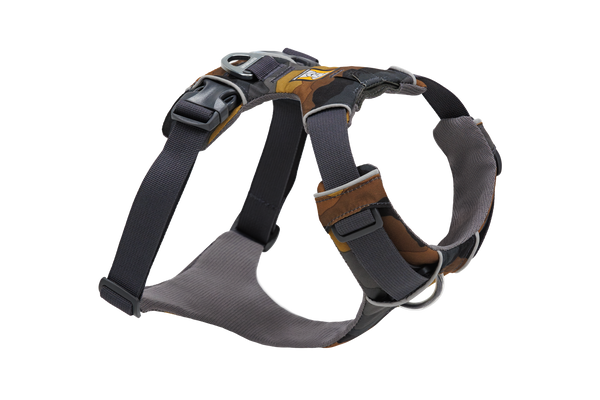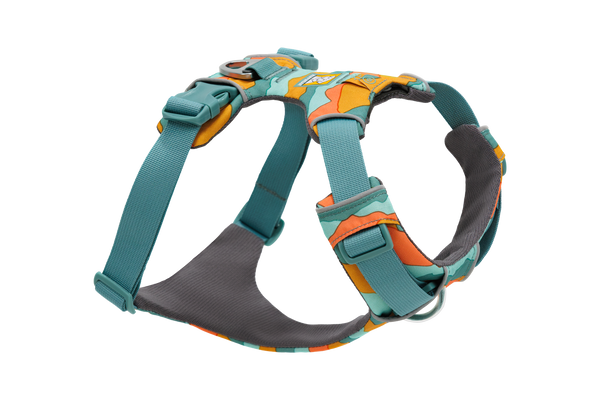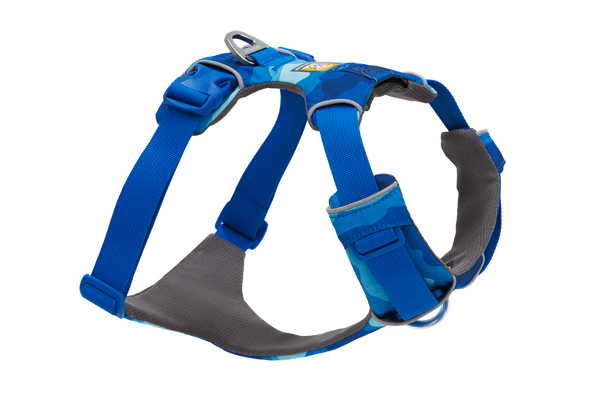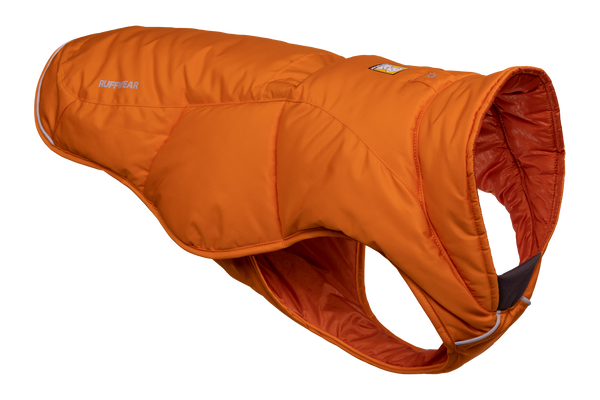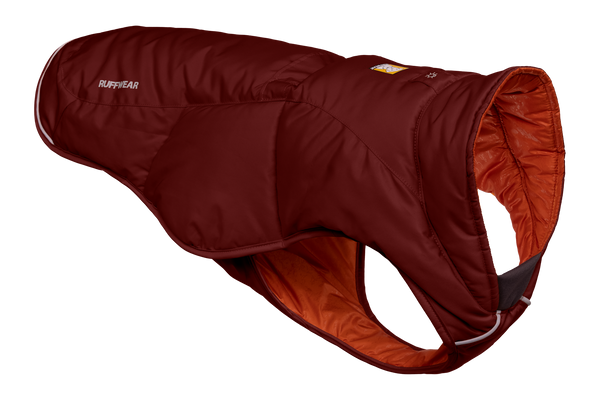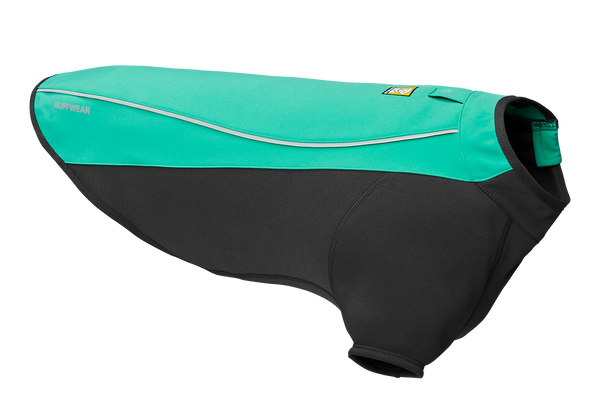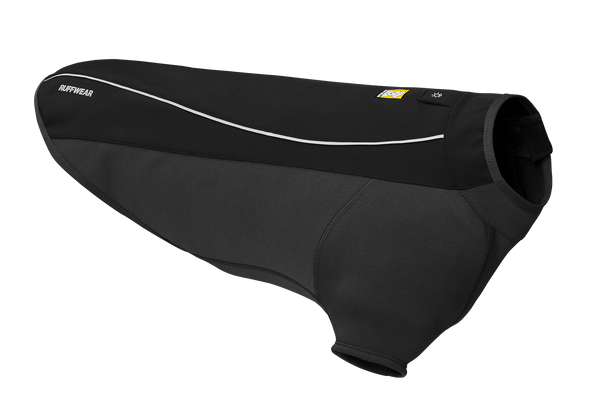Keeping your dog cool on hot days can feel like quite a feat. Because canines sweat less efficiently than humans, it can be more difficult for them to regulate their temperature and cool down. That’s where our dog cooling gear comes into play. When you have cooling gear at the ready, there’s a greater chance you won’t have to stay inside or cut your adventure short (although we always recommend exercising your dog responsibly in the heat).
The cooling gear in our Swamp Cooler Collection™ uses shading and evaporative cooling to help keep your pup cool. All you have to do is wet the gear, put it on your dog, and get outside. When the gear dries, it'll continue to provide sun protection through shading, but you can recharge it by re-wetting it with your water bottle or a quick dunk in a nearby stream.
How does evaporative cooling work to keep your dog cool, and in what climates is it most effective? Read on to learn more.
What Is Evaporative Cooling?
When you sweat or step out of a lake, you may notice a cool feeling when your wet skin first hits the air. This is evaporative cooling.
You may be asking yourself, is it actually possible to recreate that sensation for dogs? Do cooling vests work? Yes, and we’ll explain how.
Ruffwear cooling gear creates the same effect by using a three-layer construction. The wicking outer layer facilitates evaporation and provides shading and thermal protection rated at UPF 50+ (blocking approximately 98% of the sun's UV rays). The middle layer acts like a reservoir and absorbs water for evaporation, and the liner helps keep your dog dry and pulls surface heat away from the dog.

The process of evaporative cooling – whether in nature or in our gear – works best in hot, dry climates (as opposed to humid climates).
How can you know if you live and explore in an area where evaporative cooling is an effective way of keeping your dog cool?
Here are some general guidelines that can help point you in the right direction.

In What Type of Climates Does Evaporative Cooling Work?
A quick refresher: Evaporative cooling is the reason why sweat works and why you feel a cooling effect when you step out of a lake. When your skin is wet, that moisture evaporates into the air, taking heat with it and leaving cooler skin behind. It's what helps your body stay comfortable in the heat.
If you’ve ever experienced a hot, muggy day, you know that there are limits to this working. When the air is very humid (saturated with moisture), there’s just not much room for the air to absorb additional moisture, so water and sweat don't evaporate much — if at all. This is why a hot, humid day can be more uncomfortable when compared to the same hot temperature in lower humidity (AKA the much-touted “dry heat”).
That’s why evaporative cooling and our cooling gear perform best in hot, dry climates. Other factors like wind and sun can affect the rate of evaporation (more wind or more sun increase the rate of evaporation), but this is a good place to start.

Does Evaporative Cooling Work Where I Live?
If you’re curious about how effective evaporative cooling might be in your region, find out the air temperature and relative humidity of where you plan to explore.
Air temperature is likely what you’re thinking it is – a measurement of how hot or cold the air is based on a standard thermometer reading, expressed in degrees Fahrenheit or Celsius.
Relative humidity (RH) is a measurement of how saturated the air is with water, expressed in a percentage. The higher the RH, the closer the air is to being completely saturated (100%). Most weather apps show this information, and weather.com is a good place to look up seasonal trends.
For illustration, we'll use an air temperature of 85°F in both scenarios below to demonstrate how RH impacts the decrease in temperature evaporative cooling can achieve.
Hot & Dry | In a climate with summers that see a low RH of 30%, there’s more “room for moisture” in the air, and consequently more ability for evaporation to take place. Wind and sun are factors, but in this scenario of 85°F air temperature, evaporative cooling would cool the air around it to roughly 70°F (a drop of about 15°F).
So: the lower the RH, the more evaporation will take place, and the more noticeable the cooling effect will be for your dog.
Hot & Humid | If you live in a climate where summers see a moderately high RH of around 70% (air with lots of moisture in it), evaporation still takes place, but the degree to which it cools the air around it is much lower. Again, wind and sun are factors, but in this scenario of 85°F air temperature, evaporative cooling would cool the air around it to roughly 79°F (a drop of about 6°F).
So, the higher the RH, the less evaporation will take place, and the less noticeable the cooling effect will be for your dog. At 100% RH, evaporation is no longer occurring, and no cooling is taking place.

What Are More Ways I Can Keep My Dog Cool?
Keeping a dog comfortable in the heat of the summer can be accomplished in several ways. Always carry a packable dog bowl and plenty of water so they can stay hydrated on your excursions. Your dog can wear boots to help keep paws off hot pavement, rocks, and sand. And regularly check in with your dog throughout your activity: make sure they're getting enough breaks, and seek shade whenever possible.
And that's it in a nutshell. Still have questions about whether or not our cooling gear is right for your dog? You can hit the chat button in the bottom right corner or get in touch with us here.




